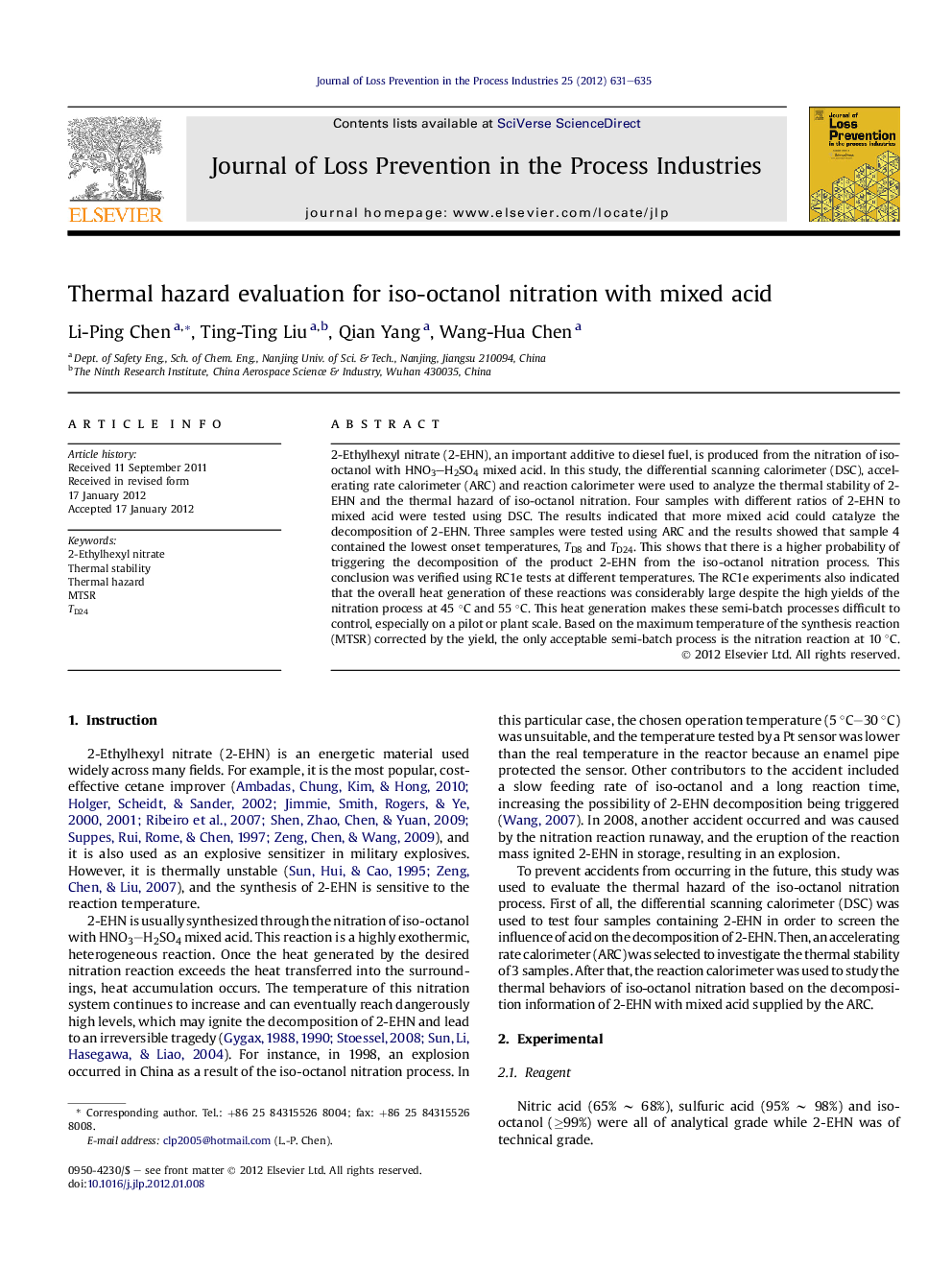| Article ID | Journal | Published Year | Pages | File Type |
|---|---|---|---|---|
| 586154 | Journal of Loss Prevention in the Process Industries | 2012 | 5 Pages |
2-Ethylhexyl nitrate (2-EHN), an important additive to diesel fuel, is produced from the nitration of iso-octanol with HNO3–H2SO4 mixed acid. In this study, the differential scanning calorimeter (DSC), accelerating rate calorimeter (ARC) and reaction calorimeter were used to analyze the thermal stability of 2-EHN and the thermal hazard of iso-octanol nitration. Four samples with different ratios of 2-EHN to mixed acid were tested using DSC. The results indicated that more mixed acid could catalyze the decomposition of 2-EHN. Three samples were tested using ARC and the results showed that sample 4 contained the lowest onset temperatures, TD8 and TD24. This shows that there is a higher probability of triggering the decomposition of the product 2-EHN from the iso-octanol nitration process. This conclusion was verified using RC1e tests at different temperatures. The RC1e experiments also indicated that the overall heat generation of these reactions was considerably large despite the high yields of the nitration process at 45 °C and 55 °C. This heat generation makes these semi-batch processes difficult to control, especially on a pilot or plant scale. Based on the maximum temperature of the synthesis reaction (MTSR) corrected by the yield, the only acceptable semi-batch process is the nitration reaction at 10 °C.
► A higher percentage of mixed acid can catalyze the decomposition of the 2-EHN. ► Based on ARC test, TD8 and TD24 of the sample 4 are 30 °C and 23 °C respectively. ► The reactions at high temperatures (45 °C and 55 °C) are of high yield and high risk. ► The most acceptable semi-batch process is the nitration at 10 °C.
